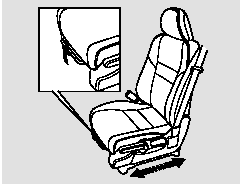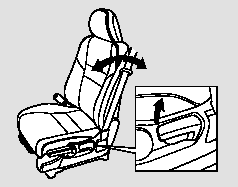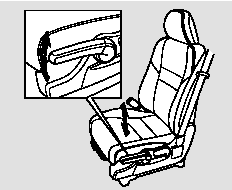Honda CR-V: Seat Adjustments
LX and U.S. EX models
See pages for important safety
information and warnings about how to
properly position the seats and seatbacks.
Make all seat adjustments before
you start driving.

To adjust the seat forward or
backward, pull up on the bar under
the seat cushion’s front edge. Move
the seat to the desired position, and
release the bar. Try tomove the seat
to make sure it is locked in position.

To change the seat-back angle of the
front seat, pull up the lever on the
outside of the seat bottom.
Once a seat is adjusted correctly,
rock it back and forth to make sure it
is locked in position.

The height of your driver’s seat is
adjustable. To raise the seat,
repeatedly pull up the lever on the
outside of the seat cushion. To lower
the seat, push the lever down
repeatedly.
READ NEXT:
To adjust the seats forward and
backward, pull up on the lever under
the seat cushion. After moving the
seat, make sure it is locked into
position.
The angle of each rear seat-back can
Each front seat has an armrest on
the side of the seat-back. To use it,
pivot it down.
The rear seat armrest is in the
center of the rear seat. Pivot it down
to use it.
The rear center seat-back has a
cargo area pass-through. To use the
cargo area pass-through, pull up the
release on top of the center seatback
and fold it down.
If your vehicle is equippe
SEE MORE:
On models without navigation system
To set the time, press the CLOCK
button until you hear a beep. The
displayed time begins to blink.
Change the hours by pressing the H
(hour) button until the numbers
advance to the desired time. Change
the minutes by pressing the M
(minute) button un
Special Tools Required
Threaded adapter, 26 x 1.5 mm 07XAC-001030A
Slide hammer, 5/8"-18 UNF, commercially available
Inboard Joint Side
1. Remove the set ring (A) from the inboard joint.
2. Remove the boot bands. Be careful not to damage the boot.
3. Make marks (A) on each roller (B) and inboa
© 2016-2025 Copyright www.hcrv.net





